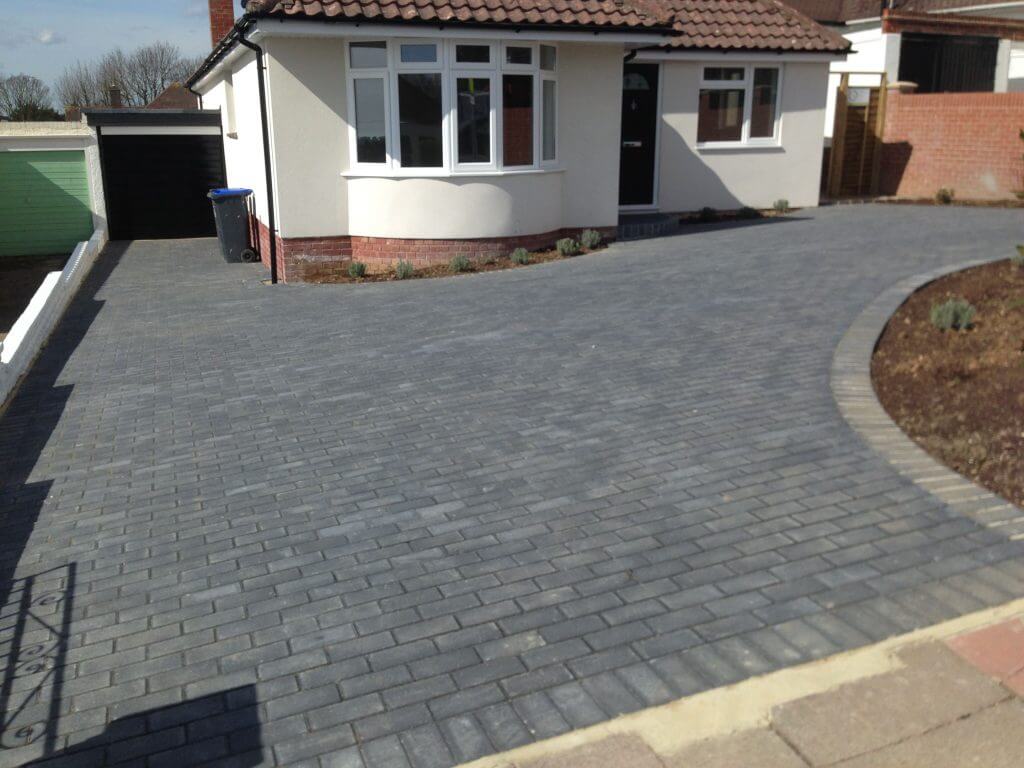Class F – driveways and other hard surfaces
The General Permitted Development Order (GPDO) allows for driveways to be laid on many homes without the need for any planning. Needless to say there are a couple of restrictions, which we will cover in this article. This part of the GPDO is why so many front gardens are now paved, but do all these driveways comply?….
All these permissions are contained within Part 1 of the GPDO and apply only to dwelling houses. Before starting work check to see if there any conditions that have been placed on your property preventing your nice new driveway or other hard standing. These are quite common on new build properties or maybe as a result of a previous planning approval. In those cases full planning permission might be required relevant to that condition or restriction.
Class F also allows for other hard surfaces to be placed in other parts of the garden including patios, paths, rear parking areas etc. However whatever the hard surface is, the same rules need to be followed.
Note that decking would fall under Class E for outbuildings as this is generally built on timber supports and not laid directly onto the ground.
You might also combine Class F with say Class B of Part 2 for access to a highway – but remember you might need permission to cross over other land or ad a dropped kerb.

Where else can’t we benefit?
These permissions do not apply to flats or maisonettes. Nor do they apply to houses that have been converted from agricultural buildings, storage, light industrial, shops or casinos. They do however apply to houses (not flats) converted from offices under Class O.
There are also restrictions of the building is listed, in a conservation area, AONB, Broads or Heritage site. They might also have been removed as a result of an Article 4 or a condition on a previous planning application.
So double check that the driveway doesn’t require planning permission.
Porous
Where the hard surface or driveway is greater than 5 square meters and is forward of the front elevation then either the hard surface must be made of porous materials, or provision is made to direct run-off water from the hard surface to a permeable or porous area or surface within the curtilage of the house. In other words, make it porous or install a drain!
That is the only requirement. There is no requirement on size.
If you are intending to park a car on the hard surface, then you will require a drop kerb, as it is an offence to cross a pavement without a drop kerb. Speak to the local authority if you need a dropped kerb to access your new driveway.
Also see Permitted development rights for householders – Technical Guidance
Legislation
Class F – hard surfaces incidental to the enjoyment of a dwellinghouse
Permitted development
F. Development consisting of—
(a) the provision within the curtilage of a dwellinghouse of a hard surface for any purpose incidental to the enjoyment of the dwellinghouse as such; or
(b) the replacement in whole or in part of such a surface.
Development not permitted
F.1 Development is not permitted by Class F if—
(a) permission to use the dwellinghouse as a dwellinghouse has been granted only by virtue of Class G, M, MA, N, P, PA or Q of Part 3 of this Schedule (changes of use); or
(b) the dwellinghouse is built under Part 20 of this Schedule (construction of new dwellinghouses).
Conditions
F.2 Development is permitted by Class F subject to the condition that where—
(a) the hard surface would be situated on land between a wall forming the principal elevation of the dwellinghouse and a highway, and
(b) the area of ground covered by the hard surface, or the area of hard surface replaced, would exceed 5 square metres,
either the hard surface is made of porous materials, or provision is made to direct run-off water from the hard surface to a permeable or porous area or surface within the curtilage of the dwellinghouse.
Page updated: 9th August 2023




